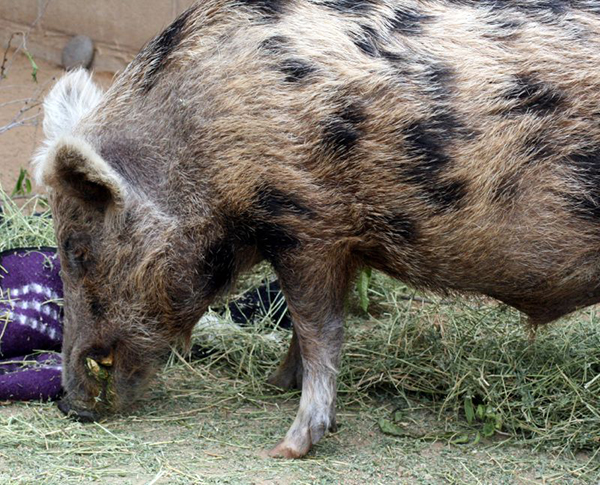

Boar hunter in the northeast can rejoice: feral swine are invading New York.
“Feral swine, also known as wild boars, wild hogs, razorbacks and Russian boars, are not native to New York. The term feral swine includes the Eurasian wild boars, domestic pigs that have escaped from farms and ‘gone wild’ and hybrids of the two,” said Kelly Stang of the New York State Department of Environmental Conservation (DEC).
Feral swine reproduce rapidly when they hit seven or eight months of age and are capable of adapting to nearly any environment. The swine are wreaking havoc on farms and crops because their strong appetites are never satiated. They weigh between 400 and 700 pounds and their size makes them capable of destroying wetlands by rolling through the mud, or wallowing.
According to the DEC, feral swine directly compete with deer, bear, turkey, squirrel and waterfowl for food. They consume the nests and eggs of ground nesting birds and reptiles and kill and eat fawns and young domestic livestock. They also have razor sharp tusks, can be aggressive toward humans and their pets and can transmit serious diseases such as swine brucellosis, E. coli, trichinosis, and pseudorabies to livestock and humans.
Feral swine are breeding in four counties in central New York, according to a federal study done last year with funding from New York’s Invasive Species Council.
“There are feral swine in New York, however, most of the reports consist of one or two animals and they are scattered throughout New York. The largest reported concentration of feral swine is in DEC Region 7 Cortland, Onondaga, Cayuga and Tioga Counties in central New York,” Stang said.
The problem with having a few wild boars in one area is that it leads to thousands in only a few years because of their breeding habits.
“The DEC is working to eradicate feral swine from N.Y. Therefore, hunters with a small game license may shoot and keep feral swine at any time and in any number. We do ask hunters to report any feral swine sightings or shootings to the DEC,” Stang said.
These hunts are taking place so the problem does not get as serious as it already is in southern states. According to biologists, there are currently over 2 million feral hogs in Texas mainly inhabiting the Eastern, Southern and Central parts of the state. According to Wildlife Biologist Rick Taylor, this population is steadily increasing as a result of intentional releases, improved habitat, greater wildlife management and better animal husbandry.
